|
Dargah Site Details.
|
||
|
|
||
|
||
|
|
||
|
||
|
|
||
|
||
|
|
||
|
||
|
|
||
|
||
|
|
||
|
||
|
|
||
|
||
|
|
||
|
Aulia Masjid Built by Khan Bahadur Chaudhri Mohd. Bukhsh of Katihar in 1851 A. D. at the sacred place where Khwaja Saheb offered prayers for the first time. Begumi Dalan Built in 1646 A. D. on the eastern side of the shrine by princess Jahan Ara. Jannati Darwaza Within the premises of the shrine it is a gate on the western side which is opened on six days during the Urs and on first and sixth and tenth of the Islamic months of Shawwal and Zil Hijj respectively. Mahfil Khana One of the more important places at the Dargah, which was built by Nawab Bashiruddaula of Hyderabad in 1899 A. D. Here Sama's ceremony is held during the Urs. Hauz Queen Mary Built in 1911 when Queen Victoria visited the Dargah. Mazar Bibi Hafiz Jamal The holy tomb of Bibi Hafiz Jamal, the daughter of Khwaja Saheb, was built by emperor Jahangir. Chilla Baba Farid Situated behind Masjid Sandalkhana, on the western side, it is the place where the great Sufi saint Baba Farid Gunjshakar engaged himself in meditations. Its doors are opened on 5th of Moharrarn, only once in a year. Aarkat Dalan Built by Nawab Arcot in 1810 A. D. Dalan Hamid Sahab Constructed by late Syed Abdul Hameed, one of the Khadims, in 1954. Badi Deg On the western side of the Darwaza lies the larger vessel, which was donated by Akbar in Hijri 976 (1569 A. D.) During Urs, about 100 mann of rice is cooked in this vessel, alongwith dry fruits and condiments. The preparation is called Tabarruk and it is distributed amongst the destitute. Chhoti Deg Offered by the emperor Jahangir in 1615 A. D. the Deg, kept on the eastern side of the Buland Darwaza is enough to cook about 29 quintals of Tabarruk. Langar Khana Here the langar (dalya of wheat and barley) is distributed daily in the morning and evening on behalf of the Dargah committee. |

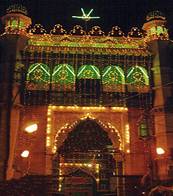
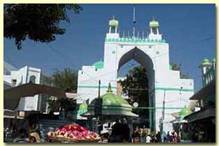
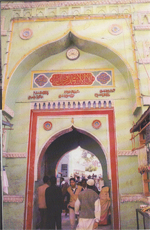

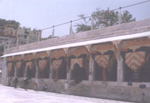
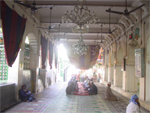
Comments are closed.